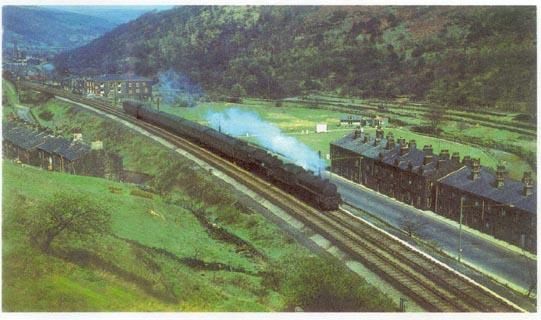Duke Street had three types of dwelling, all with outside toilets and supplied with water from springs on the hillside:
- The main terrace was back to back one-up, one-downs (although many were knocked through at a later stage). Many railway workers lived on Duke Street and several of the dwellings housed very large families. The terrace was demolished in the 1960s.
- Two older detached houses each of which appeared to be two houses knocked together (leaving two staircases). One was occupied from about 1939 by the Healey family.
- A larger detached house at the Hebden Bridge end (known as the Manse) was owned by the railway, probably built for a supervisor. The house was later occupied by a manager of Cockden Mill (Crabtree's Dyeworks) and in 1924 Clifford Crabtree the owner of the dyeworks lived there. His wife, Madame Cissie Hey gave music lessons at 2/6d an hour.
The rest of the houses were demolished in the 1970s to form the base for a new road from Duke Street up to Higher Eastwood. The new road was needed as the proposed continental style railway crossing would have caused problems of access (there were some stories of the signal man not always being entirely awake). The new road was proposed by Jack Shackleton who gave some land towards the project. An enquiry was held at Duke street and then at Todmorden Town Hall. The new road was known as Stoney Lane (after the name of the old road).

The terrace on the right is Victoria Terrace and the terrace on the left is Duke street.
THE FREEMASONS ARMS
This pub near Duke street (known locally as Old Bottoms) was the main meeting place in Eastwood. the Prince George Lodge of the Masons were meeting at the Freemasons Arms in 1812 along with other clubs and Friendly Societies. The Freemasons had a motto displayed on its wall:
"This house stands well and hinders one; Refresh and pay and travel on"
The Freemasons was another casualty of the railway and was pulled down in 1852, being rebuilt and renamed the Station House Hotel.
Above Duke Street was a large orchard with its own well which was in existence in the late 19th century. Before the Second World War, the orchard was run by Albert Lomas and after the war Arthur Beckett ran it, living in a small home built shanty.
This page was last updated April 2009